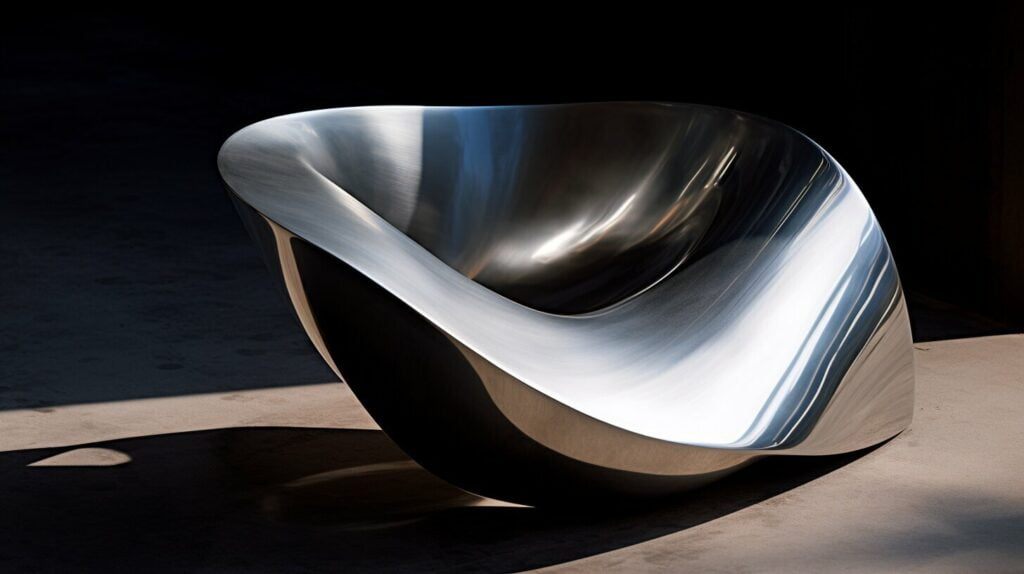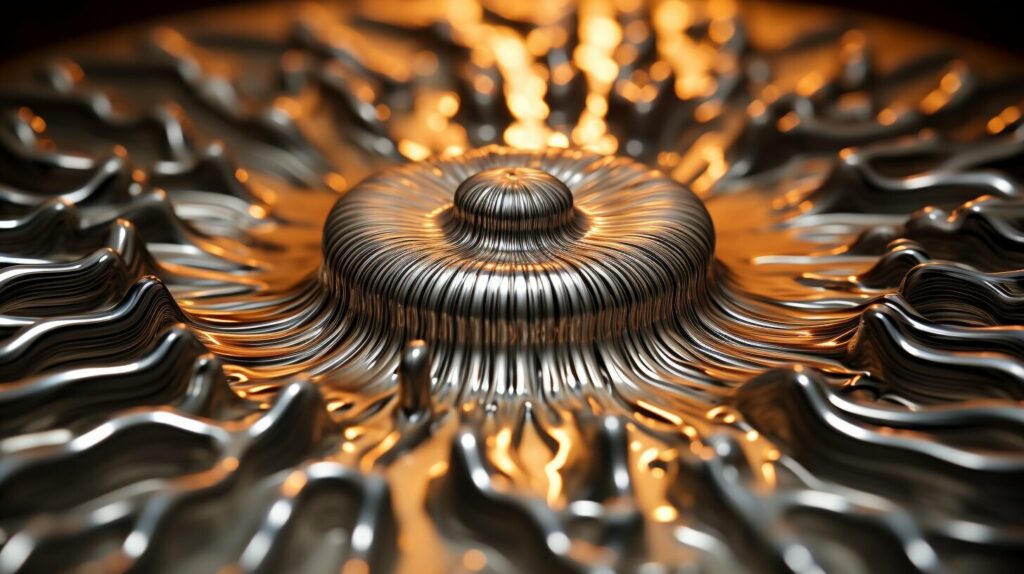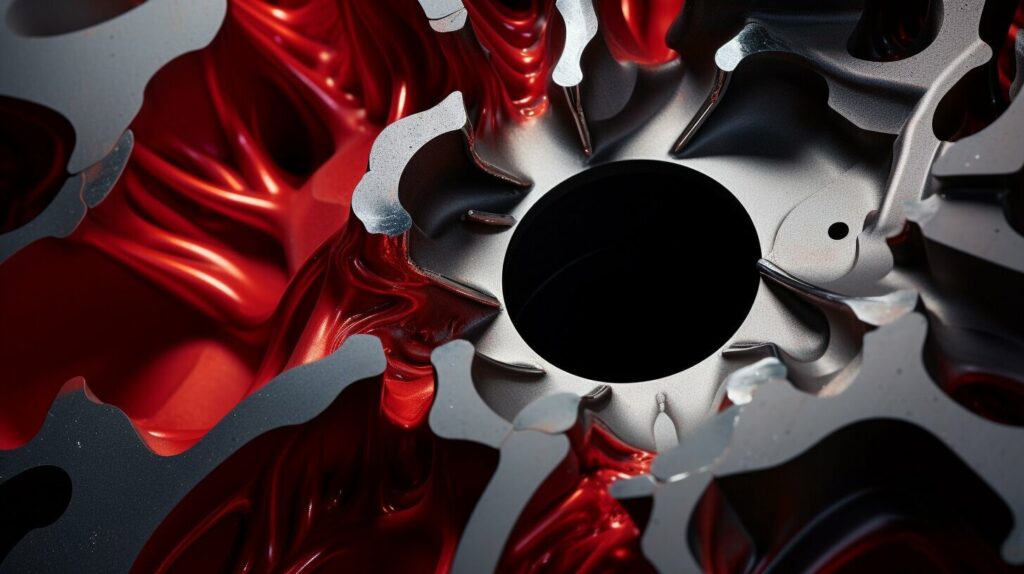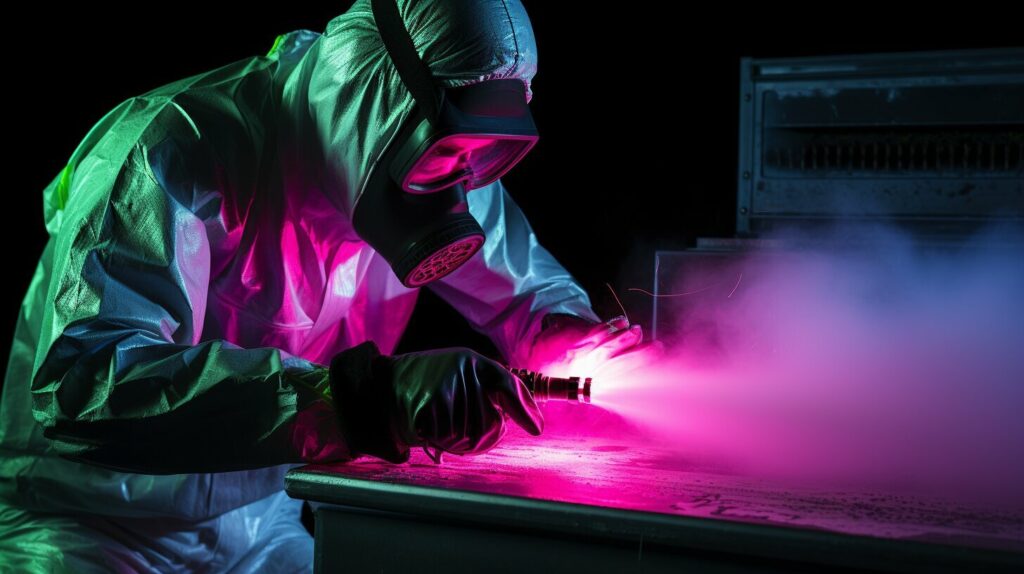At KT-Foundry, we take pride in delivering stainless steel castings of the highest quality. To achieve this, we use non-destructive testing techniques throughout the manufacturing process. Non-destructive testing is a critical step in ensuring the durability, reliability, and safety of stainless steel castings. It helps detect surface and internal defects, ensuring that the final product meets or exceeds industry standards.

Key Takeaways:
- Non-destructive testing techniques are used in stainless steel casting to ensure quality.
- Surface and internal defects can be detected through non-destructive testing.
- Stainless steel castings that meet industry standards are durable, reliable, and safe.
- Non-destructive testing is critical in ensuring that the final product is of the highest quality.
- Investing in non-destructive testing can save time and costs in the long run.
The Role of Non-Destructive Testing in Stainless Steel Casting
At KF-Foundry, we understand that non-destructive testing is a critical aspect of ensuring the quality and durability of stainless steel castings. By using methods such as magnetic particle inspection and visual inspection, we are able to detect surface defects that may compromise the integrity of the final product.
Surface defects are a common issue in stainless steel casting, and they can have a significant impact on the performance and safety of the casting. Utilizing non-destructive testing allows us to identify and address surface defects early in the manufacturing process, ensuring that the final product meets our high standards.
In addition to surface defects, non-destructive testing is also used to detect internal defects that may not be visible to the naked eye. Our team utilizes methods such as ultrasonic testing and liquid dye penetrant inspection to identify and assess any internal defects that may affect the structural integrity of the casting.
| Method | Defects Detected |
|---|---|
| Magnetic Particle Inspection | Cracks, porosity, and seams on or near the surface |
| Visual Inspection | Surface defects including cracks, scratches, and gouges |
| Ultrasonic Testing | Sub-surface defects such as shrinkage cavities, porosity, and cracks |
| Liquid Dye Penetrant Inspection | Surface and subsurface defects such as cracks, porosity, and laps |
Our team also ensures that the casting meets the proper chemical composition and wall thickness. We use a range of testing methods throughout the manufacturing process to verify these factors and ensure that the final product is free from sub-surface defects.
Non-destructive testing plays a crucial role in our investment castings, allowing us to identify and address surface defects, internal defects, and other imperfections that may affect the mechanical properties and dimensional accuracy of the casting. By utilizing testing methods such as radiographic inspection and liquid penetrant inspection, we can ensure that the final product meets the defined quality standards and specified mechanical requirements.

Detecting Internal Defects with Non-Destructive Testing
While surface defects can easily be detected, internal defects pose a more significant challenge and require more advanced non-destructive testing methods. One of the commonly used techniques is ultrasonic testing, where high-frequency sound waves are used to penetrate the material and detect internal flaws. Ultrasonic testing can identify sub-surface defects that are invisible to the naked eye, such as cracks, voids, porosity, and inclusions.
Another method used to detect internal defects is liquid dye penetrant inspection. Here, a liquid dye is applied to the surface of the casting, and after a specified time, it is rinsed off. The remaining dye penetrates into any surface cracks or other surface imperfections. A developer powder is then applied, revealing any internal defects clearly.
Both ultrasonic testing and liquid dye penetrant inspection are non-destructive testing methods, which means they do not damage the casting in any way. This helps to ensure the structural integrity of the casting and avoid any potential quality issues.
| Method | Description |
|---|---|
| Ultrasonic Testing | Uses high-frequency sound waves to identify sub-surface defects in the casting. |
| Liquid Dye Penetrant Inspection | A liquid dye is applied to the surface of the casting, revealing any surface cracks or other imperfections once the developer powder is applied. |
In order to ensure that stainless steel castings meet the highest quality standards, it is important to use non-destructive testing methods to detect both surface and internal defects. Techniques such as ultrasonic testing and liquid dye penetrant inspection make it possible to detect internal defects without damaging the casting.

Ensuring Chemical Composition and Wall Thickness
Precision in stainless steel casting extends beyond defect detection. It also involves ensuring the correct chemical composition and wall thickness of the casting. By monitoring and maintaining the chemical composition and wall thickness, we ensure that the final product meets the necessary specifications for strength and durability.
Investment castings, in particular, require strict control of the chemical composition and wall thickness. Any deviation can result in a casting that does not meet the customer’s requirements. To avoid this, we monitor the entire manufacturing process, from melting the metal to pouring it into molds. Careful attention to these details ensures that the final product meets the necessary quality standards.

The chemical composition and wall thickness are typically measured and confirmed through destructive testing methods such as taking small samples from the castings and performing chemical analysis or measuring the thickness with a micrometer. However, non-destructive testing methods can also be used to detect any potential deviations before the casting reaches the final stage.
By utilizing non-destructive testing techniques, such as radiographic inspection, we can assess the internal composition and wall thickness without damaging the casting. This ensures that we catch any potential issues before they become larger problems.
Radiographic Inspection: A Key Testing Method
Radiographic inspection is a widely used and highly effective method for testing stainless steel castings. By using high-energy radiation to penetrate the material, radiographic inspection can detect casting defects that may not be visible to the naked eye.
At KT-Foundry, we use radiographic film to inspect castings for surface cracks, tiny cracks, and other surface defects. The film is placed over the casting, and then a source of ionizing radiation is used to create an image of the casting on the film.
The resulting image is then used to identify any defects in the casting. By analyzing the image, we can determine the size, shape, and location of any defects, allowing us to take corrective action to ensure the quality of the casting.
Radiographic inspection is particularly effective at detecting sub-surface defects that may not be visible to the naked eye. These defects can compromise the integrity and functionality of the casting, making radiographic inspection a critical step in the manufacturing process.
At our facilities, we use the latest radiographic inspection equipment and techniques to ensure the highest level of accuracy and reliability in our testing.

Non-Destructive Testing for Surface Imperfections
Investment casting is a precise method of manufacturing complex metal components, including stainless steel castings. However, surface imperfections can still occur during the casting process. Non-destructive testing plays a critical role in identifying and assessing surface imperfections against defined quality standards.
Liquid penetrant inspection is one of the most widely used non-destructive testing methods for surface imperfections. This method involves applying liquid penetrant to the casting surface, which penetrates surface defects and is drawn out with a developer. The developer highlights surface defects that were not visible to the naked eye. The technique is highly effective in identifying surface defects such as cracks, porosity, laps, and other surface imperfections.
| Non-Destructive Tests for Surface Imperfections: | Defined Quality Standards: | Other Surface Imperfections: |
|---|---|---|
| Visual Inspection | ASTM E125-63 | Seams |
| Penetrant Inspection | ASTM E165-63 | Welding repairs |
| Magnetic Particle Inspection | ASTM E709-80 | Drawing marks |
It is crucial to define quality standards for surface imperfections to ensure that the castings meet the required specifications. The American Society for Testing and Materials (ASTM) has defined several quality standards for surface imperfections, including visual inspection, penetrant inspection, and magnetic particle inspection.
Other surface imperfections that may be detected by non-destructive testing include seams, welding repairs, drawing marks, and other types of surface damage. Identifying and assessing these imperfections is critical to ensuring the quality of the final product.
Our expert technicians use various non-destructive testing methods to identify and assess surface imperfections in stainless steel castings, ensuring that the castings meet the highest quality standards and are free from surface defects.

Ensuring Mechanical Properties and Dimensional Accuracy
At every stage of the stainless steel casting process, ensuring the mechanical properties and dimensional accuracy of the final product is paramount. Several non-destructive testing methods are employed to achieve this goal.
Tensile testing, which measures the stress required to break a material, is used to determine the mechanical properties of the castings. Pressure testing, on the other hand, checks if the castings can withstand a certain amount of pressure without leaking or rupturing.
Radiographic testing is a technique that uses high-frequency acoustic energy to create an image of the casting’s sub-surface. Similarly, hardness testing is used to assess the material’s hardness, which is crucial for determining its usability for specific applications.
Dimensional inspection involves measuring the product’s dimensions to ensure that it meets the specified mechanical requirements. Dye penetrant inspection is another non-destructive testing method used to detect sub-surface defects. The selected method depends on the casting’s complexity and the specific requirements for the final product.
By employing these non-destructive testing techniques, we can efficiently and effectively ensure the mechanical properties and dimensional accuracy of stainless steel castings that meet the highest industry standards.

Conclusion
Non-destructive testing is a critical process in the manufacturing of stainless steel castings. By employing various techniques such as magnetic particle inspection, ultrasonic testing, radiographic inspection, and liquid dye penetrant inspection, we can identify surface and internal defects, assess mechanical properties and dimensional accuracy, and ensure proper chemical composition and wall thickness.
The Importance of Quality Standards
At every stage of the manufacturing process, strict quality standards must be upheld to ensure that the final product meets the highest industry standards. These standards are put in place to guarantee that the stainless steel castings are safe, reliable, and fit for use in various applications.
Our Commitment to Quality
As professionals in the stainless steel casting industry, we take pride in our commitment to quality. Our team of experts utilizes the latest non-destructive testing technologies to produce castings that meet and exceed industry standards. We understand the importance of precision manufacturing and strive to deliver products that are free from defects and meet specified mechanical requirements.
With non-destructive testing techniques, we can ensure that our castings are of the highest quality, with the highest standards of safety, reliability, and performance. We are proud to be a trusted and reputable provider of stainless steel castings, and we remain committed to upholding the highest industry standards.
FAQ
Q: Why is non-destructive testing important in stainless steel casting?
A: Non-destructive testing is crucial in stainless steel casting as it helps ensure the quality of the final product without causing damage or compromising its integrity. By detecting defects and flaws, it helps to prevent potential failures and ensures the durability and reliability of the castings.
Q: What are some common non-destructive testing methods used in stainless steel casting?
A: Some common non-destructive testing methods used in stainless steel casting include magnetic particle inspection, visual inspection, ultrasonic testing, liquid dye penetrant inspection, radiographic inspection, and hardness testing. These techniques allow for the identification and assessment of surface and internal defects, ensuring the integrity of the castings.
Q: How does non-destructive testing detect internal defects in stainless steel castings?
A: Non-destructive testing methods such as ultrasonic testing and liquid dye penetrant inspection are used to detect internal defects in stainless steel castings. Ultrasonic testing uses high-frequency acoustic energy to identify sub-surface defects, while liquid dye penetrant inspection involves applying a colored dye to the casting’s surface and observing any penetrations or leaks, indicating internal defects.
Q: How does non-destructive testing ensure the correct chemical composition and wall thickness of stainless steel castings?
A: Non-destructive testing ensures the correct chemical composition and wall thickness of stainless steel castings through rigorous testing and control measures. Techniques such as radiographic inspection, pressure testing, and dimensional inspection are employed to verify the chemical composition and wall thickness according to specified requirements and industry standards.
Q: What is radiographic inspection and how does it play a role in testing stainless steel castings?
A: Radiographic inspection is a testing method that uses X-ray or gamma radiation to produce images of the internal structure of stainless steel castings. It is effective in identifying casting defects, such as surface cracks and sub-surface discontinuities. Radiographic film is used to capture these images, allowing for thorough inspection and assessment of the castings’ quality.
Q: How does non-destructive testing identify and assess surface imperfections in stainless steel castings?
A: Non-destructive testing methods, such as liquid penetrant inspection, are utilized to identify and assess surface imperfections in stainless steel castings. Liquid penetrant inspection involves applying a liquid dye to the surface of the casting, allowing it to penetrate any surface imperfection. Excess dye is then removed, and the castings are inspected under defined quality standards, ensuring the surface quality of the castings.
Q: How does non-destructive testing ensure the mechanical properties and dimensional accuracy of stainless steel castings?
A: Non-destructive testing ensures the mechanical properties and dimensional accuracy of stainless steel castings through testing methods such as tensile testing, pressure testing, hardness testing, and dimensional inspection. These tests assess the castings’ strength, pressure resistance, hardness, and dimensional conformity, ensuring they meet the specified mechanical requirements and are free from sub-surface defects.
Q: What is the role of non-destructive testing in delivering stainless steel castings that meet industry standards?
A: Non-destructive testing plays a vital role in delivering stainless steel castings that meet industry standards by ensuring their quality, precision, and durability. It helps detect surface and internal defects, verifies the chemical composition and wall thickness, ensures the mechanical properties and dimensional accuracy, and adheres to the specified industry requirements, resulting in high-quality castings that meet the highest standards.


